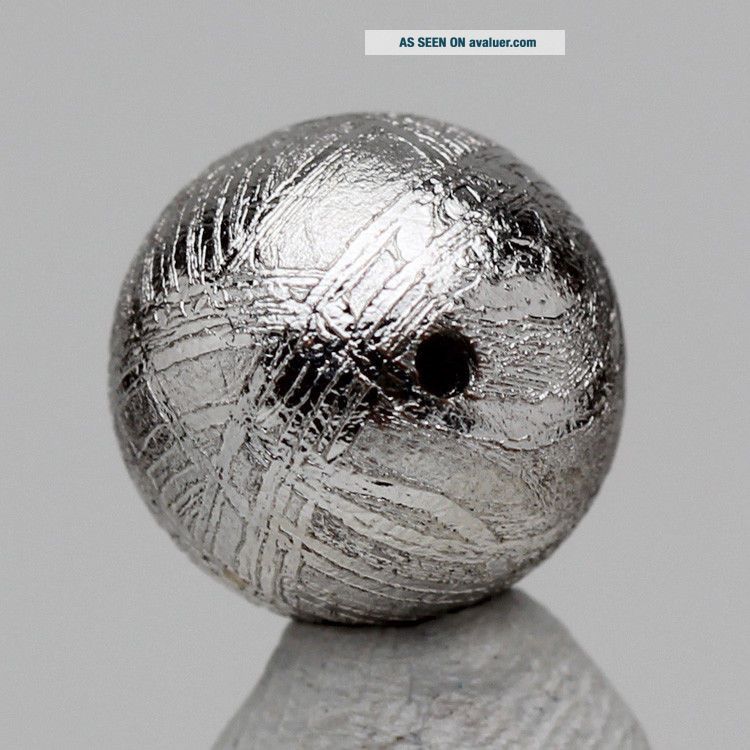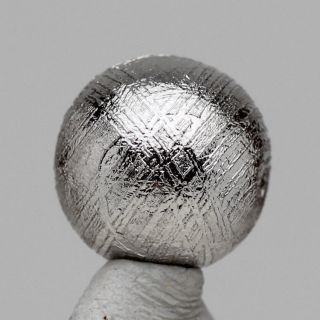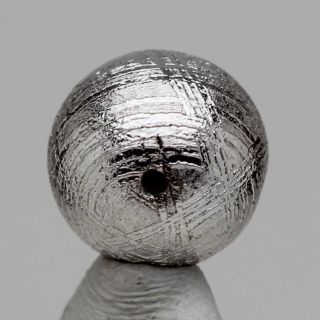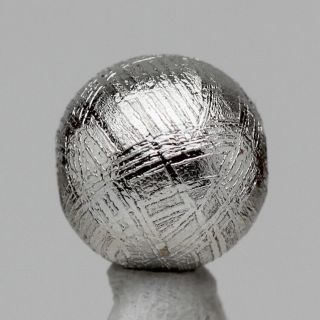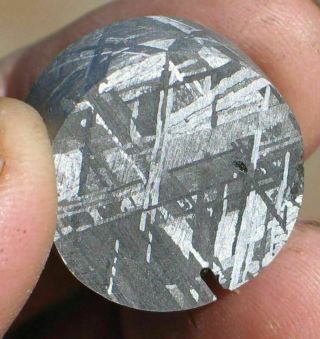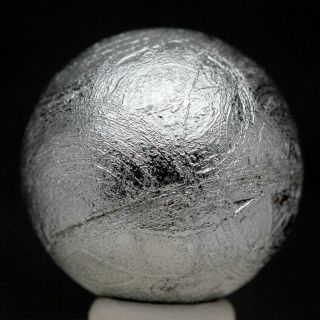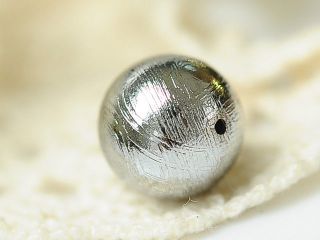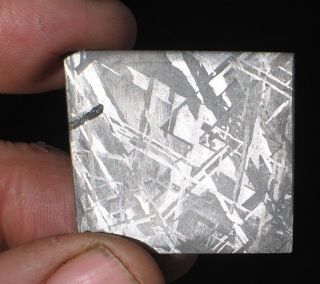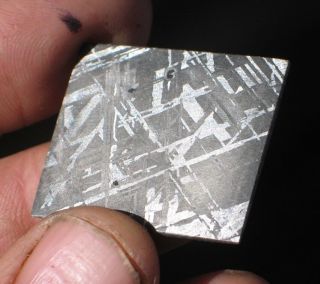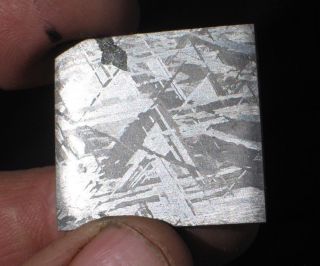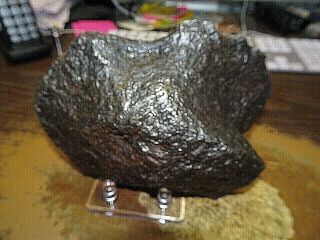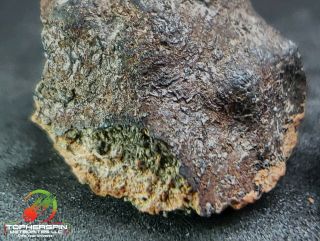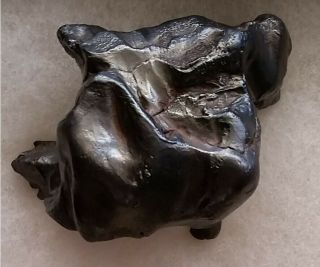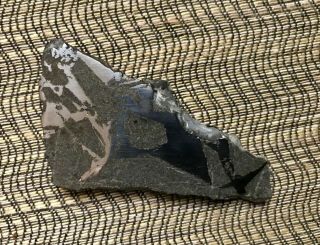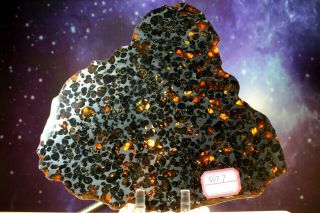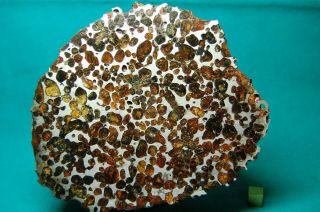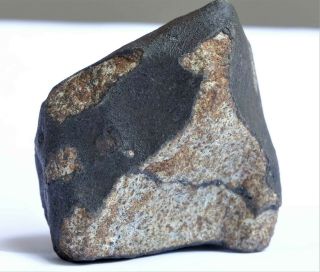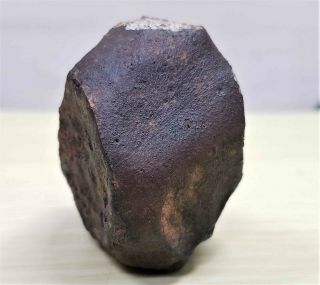Gibeon Iron Meteorite Bead RHODIUM PLATED Jewelry Drilled Etched WIDMANSTATTEN
Item History & Price
| Reference Number: Avaluer:4341386 | Mineral: Iron Meteorite |
| Weight: 4.15 grams | Size: 10 mm |
THIS LISTING IS FOR ONE BEAD AND ONE BEAD ONLY!!! I took photos of others to show slight variation, but it is only for one bead!
I offer a shipping discount for customers who combine their payments for multiple purchases into one payment!
The discount is regular shipping price for the first item and just 50 cents for each additional item!
To be sure you get your shipping discount ju...st make sure all the items you want to purchase are in your cart.
Auctions you win are added to your cart automatically.
For any "buy it now" items or second chance offers, be sure to click the "add to cart" button, NOT the "buy it now" button.
Once all of your items are in your cart just pay for them from your cart and the combined shipping discount should be applied automatically.
I offer a money back guarantee on every item I sell.
If you are not 100% happy with your purchase just send me a message to let me know
and I will buy back the item for your full purchase price.
Hi there, I am selling this amazing rhodium plated, Gibeon iron meteorite etched bead! Meteorites are one of the RAREST materials on earth, more rare than diamonds!!!! This one fell in Namibia South Africa. The etched surface of this specimen reveals the natural Widmanstten pattern. The Widmanstatten pattern is a crystal structure that occurs only in the iron-nickel meteorites. For this to form, the parent body has to be large enough that most of its metal content melted and sank to the core, then slowly cooled over millions of years. Then at some point, this large body was destroyed and shattered, eventually raining pieces of itself down on Earth. When you hold this bead in your hand, you are holding the core of a small planet that no longer exists! These beads are one of the most prized possessions and I know it would make an AMAZING addition to any collection of ANY type, especially of meteorites and stones! Don't let this one pass you by. Anyway, I am offering it here, now, for you. Hopefully this will find a great home out there, and make someone thrilled. This is carved into a round bead, and drilled with a nice size hole for stringing onto jewelry, and it is also etched perfectly by an expert etcher, also this one is plated with RHODIUM! Rhodium plating of iron meteorites has become all the rage and for a really good reason, they are practically indestructible once they are plated with rhodium! Rhodium is incredibly resistant to corrosion and putting a coat onto the bead makes it more durable for use as jewelry! The process is really expensive and only a few meteorite carvers even have this process available to them. It would be perfect if it were wire wrapped into a pendant masterpiece that was reversible, that would be stellar! These would also look great as earrings too. If you have any questions, do not hesitate to ask me. Thanks so much for visiting my auction and have a great day!
If you purchase from me you should know that the authenticity of this meteorite is guaranteed!
Iam a member of the IMCA or the International Meteorite Collector'sAssociation. This is an organization that is a check and balance ofthose who collect, trade and sell meteorites. You can only join thisorganization by having the utmost integrity. You must to have two references from existing members to get in and a goodreputation. Members of this organization maintain a highstandard by monitoring each others' activities for accuracy and honesty. It isevery IMCA member's responsibility and pleasure to offer help andassistance to fellow members in order to ensure specimens are genuine. It is not wise to purchase meteorites on Ebayor other sources from those who are not IMCA members. This is a verytight-knit community made up of meteorite hunters, dealers, collectors, and scientists who look out for each other to make surethat the meteorites offered to the public are authentic and genuine. I encourage you to visit the IMCA website and getmore information on what being a member means, and how your purchasesfrom its members are guaranteed.
IMCA Member #7446
Below is some information about this meteorite:
Gibeon (meteorite)
From Wikipedia, the free encyclopedia
GibeonImageGibeon (meteorite)Gibeon meteorites in Post Street Mall, WindhoekMeteorite type: IronGroup: IVAStructural classification: Fine octahedriteComposition: 91, 8% Fe; 7, 7% Ni; 0, 5% Co; 0, 04% P; 2, 4 ppm Ir; 1, 97 ppm Ga; 0, 111 ppm GeCountry: NamibiaRegion: Great NamaqualandCoordinates: show location on an interactive map25°20′S 18°00′E / 25.333°S 18°ECoordinates: show location on an interactive map25°20′S 18°00′E / 25.333°S 18°EObserved fall: NoFall date: prehistoric timesFound date: 1838Total Known Weight (TKW): 26000 KgWidmanstätten pattern: Widmanstätten pattern
Gibeon is a meteorite fallen in prehistoric times in Namibia. It was named after the nearest town: Gibeon (Namibia).
Contents
1 History2 Strewn field3 Composition and classification4 Notes
History
It was discovered by natives (Namaqua) and used to build arrows and other tools.
In 1836[1] the English capitain J. E. Alexander collected some samples in the Great Fish River area and sent them to London. Here John Herschel analyzed them and confirmed for the first time the extraterrestrial nature of the material.
Strewn field
The fragments in the strewn field are dispersed over a 275 km long and 100 km wide elliptical-shaped area.
Composition and classification
Gibeon meteorites are made of an iron-nickel alloy, but contain also cobalt and phosphorus. The crystal structure of this meteorite is a classic example of fine octahedrite and the Widmanstatten pattern aesthetically appreciated both by collectors and jewel designers.
Notes
^ Meteoritical Bulletin Database: Gibeon
Since it was first discovered in 1836 in Great Namaqualand, Namibia, Africa, more than 25 tons of Gibeon meteorites have been recovered and although export and sale was banned by the Namibian government, it is still one of the most commonly available meteorites on the market today. The Gibeon meteorites come from broken asteroid fragments or an exploded star and radiometric dating places the age at around 4 billion years old.
Gibeon meteorites are composed of iron, nickel and small amounts of cobalt and classified as a fine octahedrite iron meteorite. Some other minerals that may be found in the meteorite are chromite, deabreelite, enstatite, kamacite, taenite, troilite or tridymite.
Lines and patterns are the result of cooling in outer space over billions of years and etching slices with dilute nitric acid allow these patterns known as "Widmanstatten lines" to be more visible.
Until recent years, most Gibeon meteorites that were recovered weighed between 200 and 1100 pounds. One of the largest masses ever found weighed over 1400 pounds. Probably due to better metal detection equipment, many smaller specimens have been recovered recently.
When a meteorite enters the Earth's atmosphere, friction raises the surface temperature above its melting point. As the meteorite descends, it slows down, and the heat from friction decreases resulting in a thin layer of dark glass. The surface on some meteorite's may develop shallow pits during the entry process and these pits resemble thumb prints and are known as regmaglypts. Imagine bread dough that has been kneaded which leaves finger imprints in the dough ball.
Gibeon Meteorite Folklore, Legend & Healing Properties:
Kalahari Desert tribesmen picked up meteorites that lay on the ground's surface and made arrowheads and assagai-heads, a javelin type weapon made of long, thin pointed iron rods with sharp edges.
Meteoric iron is used for alignment and balancing; it symbolizes the aptitude and strength required for endurance. Nickel is thought to purify the blood and increase the body's iron content.
Bead
From Wikipedia, the free encyclopediaFor other uses, see Bead (disambiguation).Globe icon.The examples and perspective in this article may not represent a worldwide view of the subject. Please improve this article and discuss the issue on the talk page. (December 2010)
Beads
A bead is a small, decorative object that is formed in a variety of shapes and sizes of a material such as glass, plastic, wood or pearl and that is pierced for threading or stringing. Beads range in size from under 1 millimetre (0.039 in) to over 1 centimetre (0.39 in) in diameter. A pair of beads made from Nassarius sea snail shells, approximately 100, 000 years old, are thought to be the earliest known examples of jewellery.[1][2] Beadwork is the art or craft of making things with beads. Beads can be woven together with specialized thread, strung onto thread or soft, flexible wire, or adhered to a surface (e.g. fabric, clay).
Contents
1 Types of beads2 Components2.1 Natural materials2.2 Synthetic materials3 Manufacturing3.1 Glassworking3.1.1 Specialized glass techniques and types4 Shapes4.1 Hair pipe beads4.2 Seed beads5 Place or period of origin5.1 Miscellaneous ethnic beads6 Symbolic meaning of beads7 Surface patterns8 See also9 References10 Further readingTypes of beads
Cloisonné beadsBeads may be divided into several types of overlapping categories based on different criteria such as the materials from which they are made, the process used in their manufacturing, the place or period of origin, the patterns on their surface, or their general shape. In some cases, such as millefiori and cloisonné beads, multiple categories may overlap in an interdependent fashion.
Components
Beads can be made of many different materials. The earliest beads were made of a variety of natural materials which, after they were gathered, could be readily drilled and shaped. As humans became capable of obtaining and working with more difficult materials, those materials were added to the range of available substances. More recently, synthetic materials were added.
In modern manufacturing, the most common bead materials are wood, plastic, glass, metal, and stone.
Natural materials
Beads are still made from many naturally occurring materials, both organic (i.e., of animal- or plant-based origin) and inorganic (purely mineral origin). However, some of these materials now routinely undergo some extra processing beyond mere shaping and drilling such as color enhancement via dyes or irradiation.
The natural organics include bone, coral, horn, ivory, seeds (such as tagua nuts), animal shell, and wood. For most of human history pearls were the ultimate precious beads of natural origin because of their rarity; the modern pearl-culturing process has made them far more common. Amber and jet are also of natural organic origin although both are the result of partial fossilization.
The natural inorganics include various types of stones, ranging from gemstones to common minerals, and metals. Of the latter, only a few precious metals occur in pure forms, but other purified base metals may as well be placed in this category along with certain naturally occurring alloys such as electrum. There are also paper beads.
Synthetic materials
Swarovski crystal beads (6 mm–8 mm), pendant 3 cm
Fusible plastic beads
Swedish patent 217875: The plastic bead pegboard (1962).The oldest-surviving synthetic materials used for beadmaking have generally been ceramics: pottery and glass. Beads were also made from ancient alloys such as bronze and brass, but as those were more vulnerable to oxidation they have generally been less well-preserved at archaeological sites.
Many different subtypes of glass are now used for beadmaking, some of which have their own component-specific names. Lead crystal beads have a high percentage of lead oxide in the glass formula, increasing the refractive index. Most of the other named glass types have their formulations and patterns inseparable from the manufacturing process.
Small, colourful, fusible plastic beads (some brands are Nabbi, Hama, Perler, and Pyssla) can be placed on a solid plastic-backed peg array to form designs and then melted together with a clothes iron; alternatively, they can be strung into necklaces and bracelets or woven into keychains. Fusible beads come in many colors and degrees of transparency/opacity, including varieties that glow in the dark or have internal glitter; peg boards come in various shapes and several geometric patterns. Plastic toy beads, made by chopping plastic tubes into short pieces, were introduced in 1958 by Munkplast AB in Munka-Ljungby, Sweden, under the brand Nabbi. Known as Indian beads, they were originally sewn together to form ribbons. The pegboard for bead designs was invented in the early 1960s (patented 1962, patent granted 1967) by Gunnar Knutsson in Vällingby, Sweden, as a therapy for elderly homes; the pegboard later gained popularity as a toy for children.[3] [4] The bead designs were glued to cardboard or Masonite boards and used as trivets. Later, when the beads were made of polyethylene, it became possible to fuse them with a flat iron. In 2005, Munkplast/Nabbi introduced the Photo Pearls software that converts digital photos to bead designs. Hama come in three sizes: mini (diameter 2.5 mm), midi (5 mm) and maxi (10 mm). Perler beads come in two sizes called classic (5 mm) and biggie (10 mm). Pyssla beads (by IKEA) only come in one size (5 mm).
Manufacturing
Modern mass-produced beads are generally shaped by carving or casting, depending on the material and desired effect. In some cases, more specialized metalworking or glassworking techniques may be employed, or a combination of multiple techniques and materials may be used such as in cloisonné.
Glassworking
Pressed glass beads (matte finish with an AB coating)
Fire polished beads (10 millimetres (0.39 in)) with AB coatingMost glass beads are pressed glass, mass-produced by preparing a molten batch of glass of the desired color and pouring it into molds to form the desired shape. This is also true of most plastic beads.
A smaller and more expensive subset of glass and lead crystal beads are cut into precise faceted shapes on an individual basis. This was once done by hand but has largely been taken over by precision machinery.
"Fire-polished" faceted beads are a less expensive alternative to hand-cut faceted glass or crystal. They derive their name from the second half of a two-part process: first, the glass batch is poured into round bead molds, then they are faceted with a grinding wheel. The faceted beads are then poured onto a tray and briefly reheated just long enough to melt the surface, "polishing" out any minor surface irregularities from the grinding wheel.
Specialized glass techniques and types
Dichroic beads (10 millimetres (0.39 in))
Furnace glass beadsThere are several specialized glassworking techniques that create a distinctive appearance throughout the body of the resulting beads, which are then primarily referred to by the glass type.
If the glass batch is used to create a large massive block instead of pre-shaping it as it cools, the result may then be carved into smaller items in the same manner as stone. Conversely, glass artisans may make beads by lampworking the glass on an individual basis; once formed, the beads undergo little or no further shaping after the layers have been properly annealed.
Most of these glass subtypes are some form of fused glass, although goldstone is created by controlling the reductive atmosphere and cooling conditions of the glass batch rather than by fusing separate components together.
Dichroic glass beads incorporate a semitransparent microlayer of metal between two or more layers. Fibre optic glass beads have an eyecatching chatoyant effect across the grain.
There are also several ways to fuse many small glass canes together into a multicolored pattern, resulting in millefiori beads or chevron beads (sometimes called "trade beads"). "Furnace glass" beads encase a multicolored core in a transparent exterior layer which is then annealed in a furnace.
More economically, millefiori beads can also be made by limiting the patterning process to long, narrow canes or rods known as murrine. Thin cross-sections, or "decals", can then be cut from the murrine and fused into the surface of a plain glass bead.
Shapes
Hair pipe beads
Elk rib bones were the original material for the long, tubular hair pipe beads.[5] Today these beads are commonly made of bison and water buffalo bones and are popular for breastplates and chokers among Plains Indians. Black variations of these beads are made from the animals' horns.
Seed beads
Main article: Seed beadSeed beads are uniformly shaped spheroidal or tube shaped beads ranging in size from under a millimetre to several millimetres. "Seed bead" is a generic term for any small bead. Usually rounded in shape, seed beads are most commonly used for loom and off-loom bead weaving.
Place or period of origin
Carved Cinnabar lacquer beadsAfrican trade beads or slave beads may be antique beads that were manufactured in Europe and used for trade during the colonial period, such as chevron beads; or they may have been made in West Africa by and for Africans, such as Mauritanian Kiffa beads, Ghanaian and Nigerian powder glass beads, or African-made brass beads.
Austrian crystal is a generic term for cut lead-crystal beads, based on the location and prestige of the Swarovski firm.
Czech glass beads are made in the Czech Republic, in particular an area called Jablonec nad Nisou. Production of glass beads in the area dates back to the 14th century, though production was depressed under communist rule. Because of this long tradition, their workmanship and quality has an excellent reputation.
Vintage beads, in the collectibles and antique market, refers to items that are at least 25 or more years old. Vintage beads are available in materials that include lucite, plastic, crystal, metal and glass.
Miscellaneous ethnic beads
Tibetan Dzi beads and Rudraksha beads are used to make Buddhist and Hindu rosaries (malas). Magatama are traditional Japanese beads, and cinnabar was often used for beads[clarification needed] in China. Wampum are cylindrical white or purple beads made from quahog or North Atlantic channeled whelk shells by northeastern Native American tribes, such as the Wampanoag and Shinnecock.[6] Job's tears are seed beads popular among southeastern Native American tribes. Heishe are beads made of shells or stones by the Kewa Pueblo people of New Mexico.
Symbolic meaning of beads
In many parts of the world, beads are used for symbolic purposes, for example:
use for prayer or devotion - e.g. rosary beads for Roman Catholics, misbaha for Muslimsuse for anti-tension devices, e.g. worry beadsuse as currency e.g. Aggrey beads from Ghanause for gaming e.g. owari beads for mankalaGreek komboloi beads as in CreteSurface patterns
After shaping, glass and crystal beads can have their surface appearance enhanced by etching a translucent frosted layer, applying an additional colour layer, or both. Aurora Borealis, or AB, is a surface coating that diffuses light into a rainbow. Other surface coatings are vitrail, moonlight, dorado, satin, star shine, and heliotrope.
Faux beads are beads that are made to look like a more expensive original material, especially in the case of fake pearls and simulated rocks, minerals and gemstones. Precious metals and ivory are also imitated.
Tagua nuts from South America are used as an ivory substitute since the natural ivory trade has been restricted worldwide.
00459



